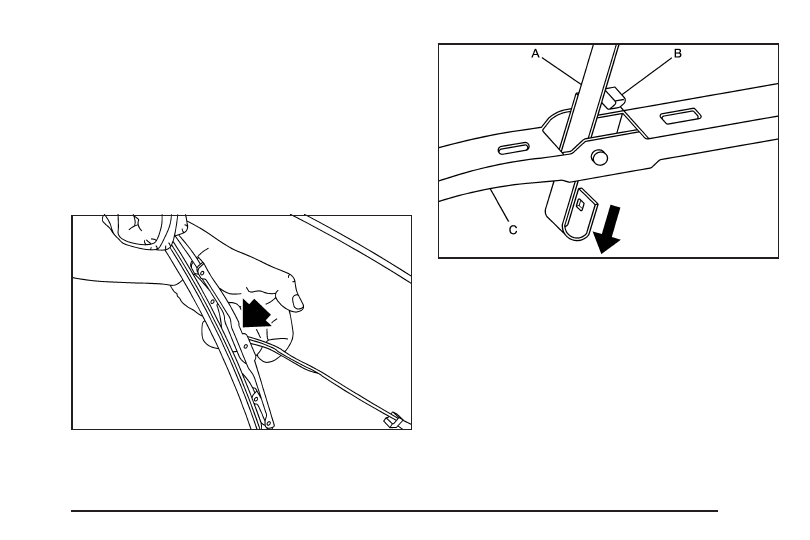Saturn Sky (2008 year). Manual - part 16

Windshield Wiper Blade
Replacement
Windshield wiper blades should be inspected for wear
and cracking. See Scheduled Maintenance on page 6-4
for more information.
Replacement blades come in different types and are
removed in different ways. For proper type and length,
see Normal Maintenance Replacement Parts on
page 6-14.
To replace the windshield wiper blade assembly do
the following:
1. Lift the wiper arm away from the windshield.
2. Push the release lever (B) to disengage the hook
and push the wiper arm (A) out of the blade (C).
3. Push the new wiper blade securely on the wiper
arm until you hear the release lever click into
place.
5-49